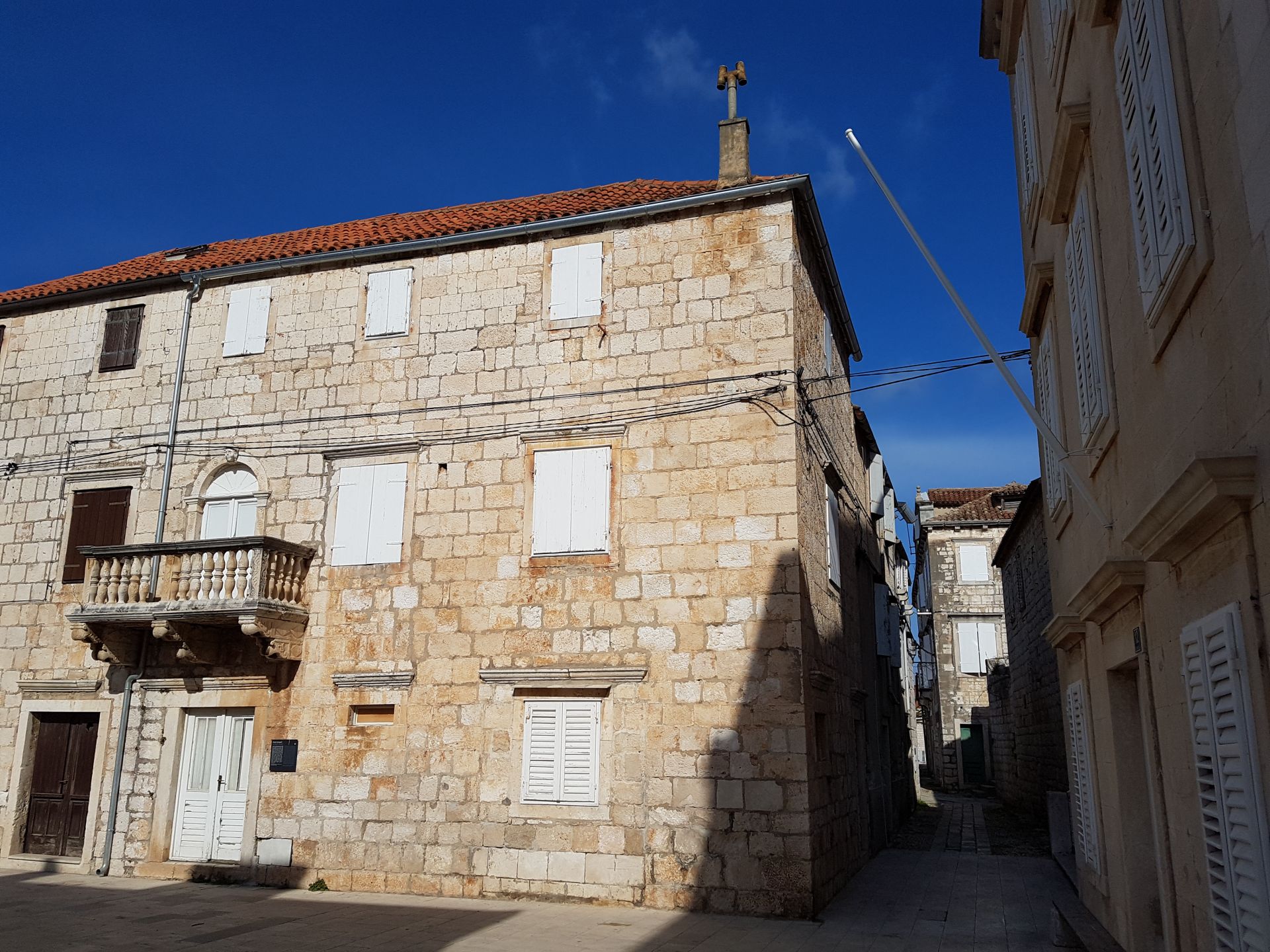If you want to get to know the history of Vis, you must visit these buildings.
Croatian Hall
The construction of the Croatian Hall was initiated by the members of the patriotic association ˝Viški skup˝ (˝Vis Council˝), founded in 1870 with the goal of strengthening national awareness and combatting the influence of the Autonomist Party.
Find out moreZamberlin House and Garden
The house of the Zamberlin family was built in the 16th century in the style of the Late Renaissance.
Find out moreThe Jakša-Andreučić House on Munjac
This fortified residential and commercial complex with a tower, located in the area of Munjac, belonged to the Croatian noble family Jakša in the 16th century and was later owned by the Andreučić family.
Find out moreSchool
Up to the late 16th century, members of the noble Hvar-Vis families and priests were the only literate denizens of the island of Vis.
Find out moreVilla Topić
Serafin Topić, member of the People’s Party, long-time mayor of Vis (between 1895 and 1918), and the owner of the first steamship company on Vis (founded in 1891), purchased an estate on the peninsula of St George and built a villa on the site of the former barracks.
Find out moreFish Market
The building of the fish market was built in the early 20th century and represents an important example of Neoclassical architecture for a public purpose.
Find out moreGothic House in the Area of Luka
The houses of a Romanesque or Gothic style in Kut and Luka that have, in spite of later reconstructions, remained partially preserved are witness to the prolificness of construction activities conducted in this region during the 14th and 15th century .
Find out moreGariboldi Palace
The Palace was built in 1552 and is a delightful example of a renaissance country house. At the beginning of the 16th century, Frane Gariboldi moved from Milan to Hvar, becoming an inhabitant, and building a house and shop in a very crowded part of the town and a graveyard in the Franciscan church.
Find out moreGazarović Palace
This palace was built by the well-known Croatian writer, dramatist and poet Marin Gazarović, the author of Murata Gusara, Ljubica and other works-of-art. He built this palace as a place for resting and to monitor his land ownership, as did many other Dalmatian nobles on their coastal lands.
Find out morePrdvarić Palace
This Renaissance and baroque one storey house belonging to the Prdvarić family was built in the late 16th century and is situated in the part of Vis known as Kut, close to the sea.
Find out moreJakša Palace
Thanks to its position, Jakša palace, Jakinovi dvori, closes the Vis settlement Kut on its eastern wing whilst a large square opens out in the front of it.
Find out moreRadošević Palace
This palace once notably dominated the port of Vis, facing it with its longer northern façade. Well-proportioned and built over two-storeys, the building has the form of an elongated rectangle, oriented east-west.
Find out moreVukašinović Palace – Dojmi de Lupis
Similar to the adjacent Radošević palace, this one also dominated the port of Vis. It was built in the 17th/18th century as a two-storey building of rectangular layout.
Find out moreMardešić Palace
The Mardešić Palace was built in the 18th century as a three-storey building with a courtyard on its northern wing. Before the coastline was built, the entrance to the fenced courtyard was from the northern wing and through a wide door on the western wing.
Find out moreTramontana Palace
Tramontana Palace is situated on Klapavica Square in the part of Vis known as Luka and was built by a merchant, Luka Tramontana in 1911 in the Neo-Renaissance style.
Find out more
Ismaelli House
During the 17th century, the noble family Ismaelli from Korčula, nobles of Hvar since 1597, erected their home. The house of the Ismaellis was not the centre of an estate as they did not own land on Vis like the other nobles of Hvar - but, instead, a site of trade and relaxation.
Find out more









